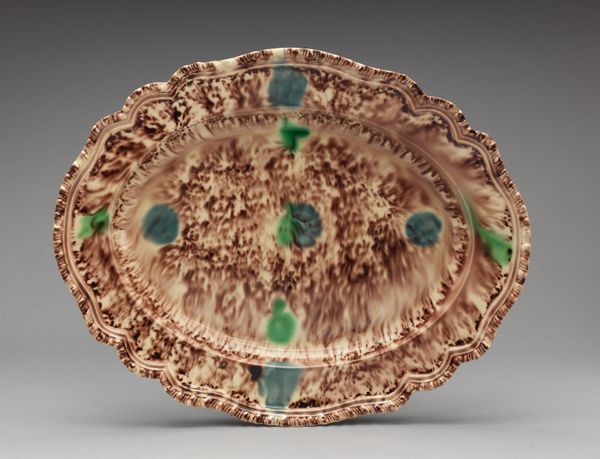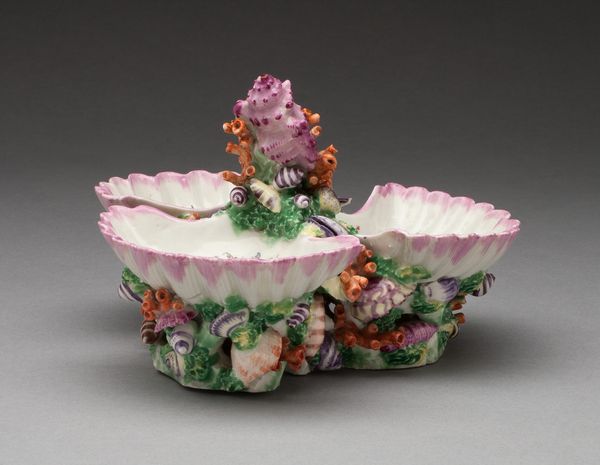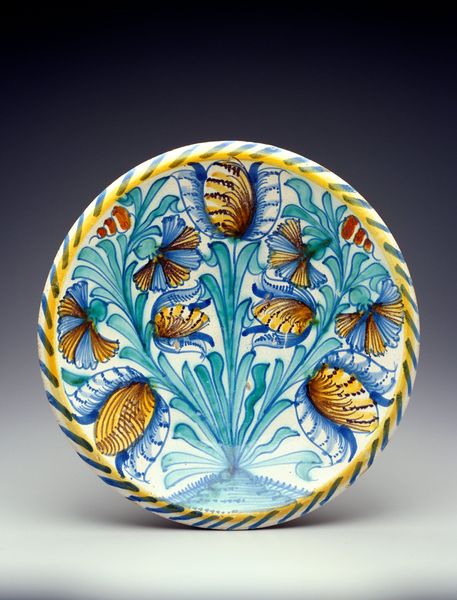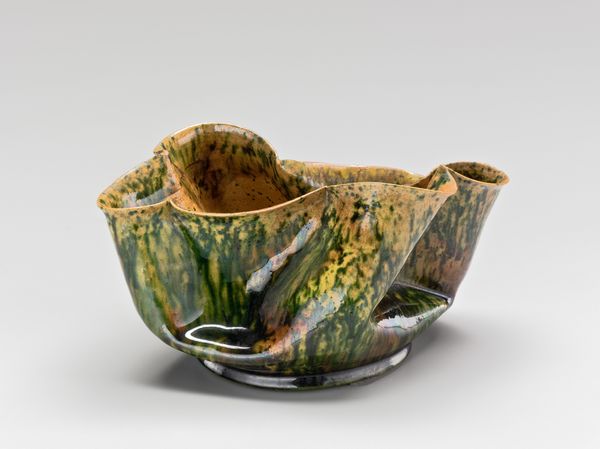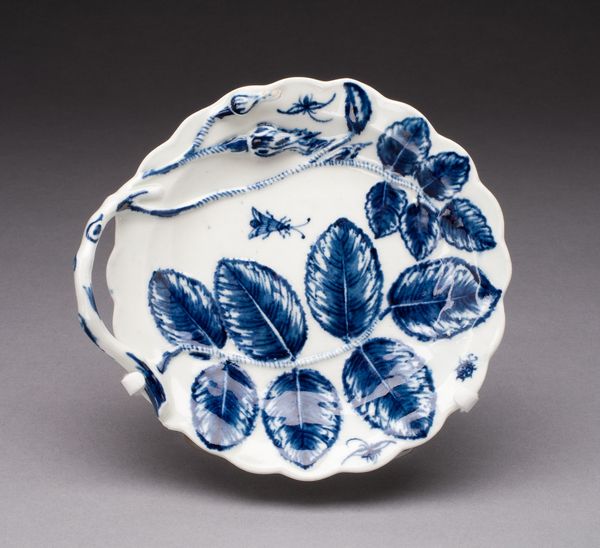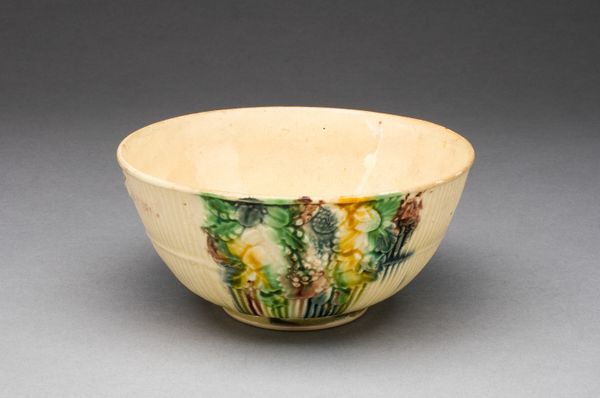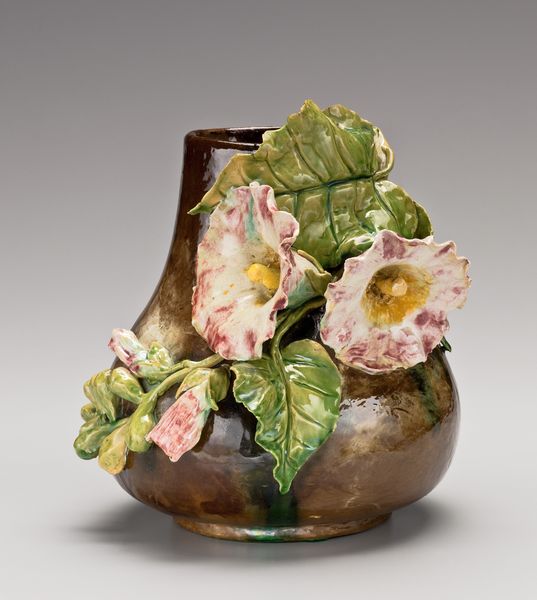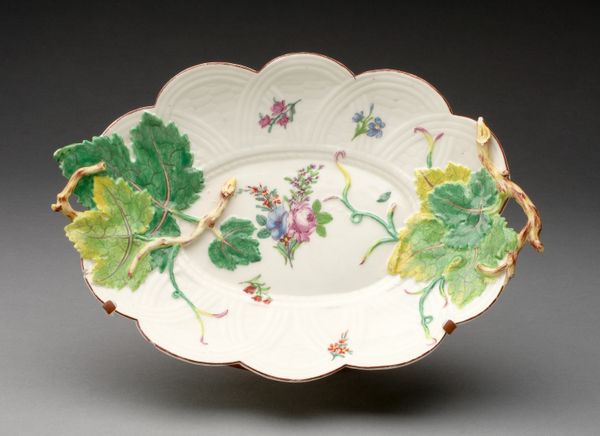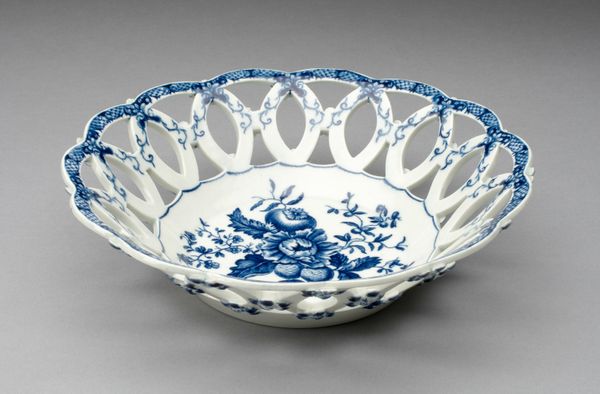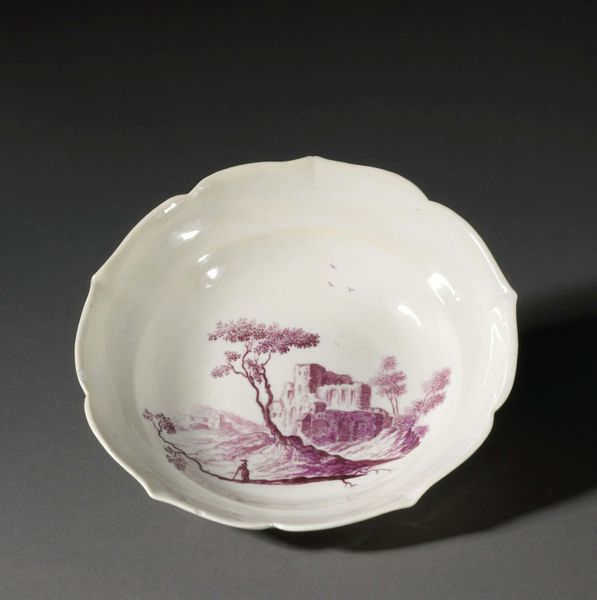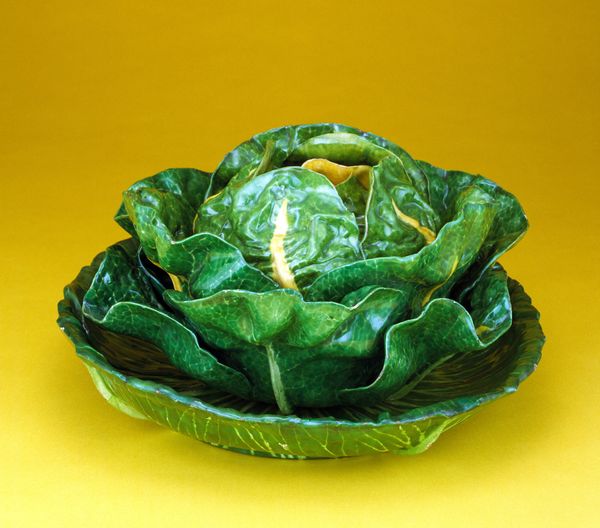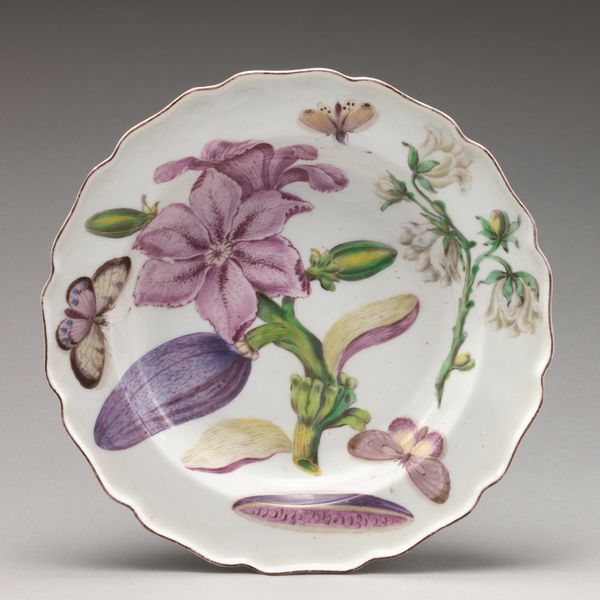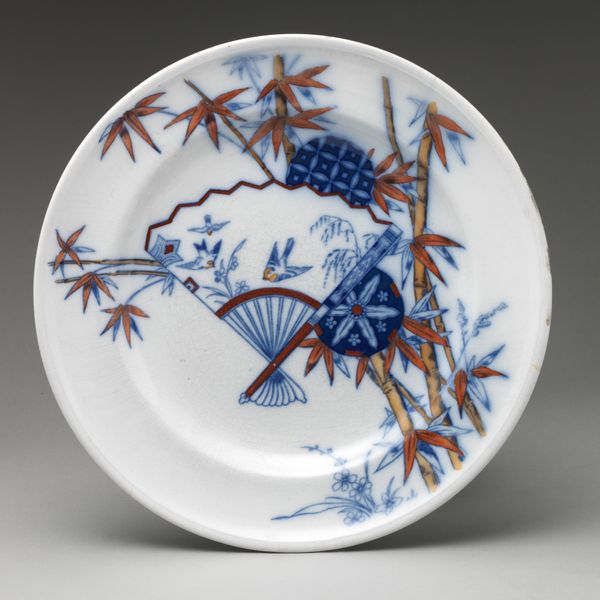
ceramic, earthenware
#
decorative element
#
ceramic
#
earthenware
#
stoneware
#
ceramic
#
decorative-art
Dimensions: H. 9 1/2 in. (24.1 cm); Diam. 12 in. (30.5 cm)
Copyright: Public Domain
Editor: This ceramic "Bread Plate" from the 1880s, made by Griffen, Smith and Hill, has an interesting shape. The artist used a majolica glaze on the earthenware. What do you see in this piece that I might be missing? Curator: Well, let's consider the historical and social context first. The rise of industrialization allowed for mass production of these earthenware pieces, making decorative arts accessible to a wider range of people, even while mimicking handcrafted, unique items. Editor: So you're saying its inherent value lies in the democratization of art? Curator: Precisely. Think about the labor involved – from mining the clay to the skilled workers operating the kilns. The faux naturalism is a kind of fantasy masking an industrial process. Are we meant to yearn for something that has already vanished? This is "art" created within, not despite, the realities of industry. Editor: It seems paradoxical, craving nature, made industrially... and that we still treasure it in museums. Does that suggest anything about contemporary consumerism? Curator: Exactly! Mass production has always coexisted alongside a desire for handmade unique pieces. The plate reflects ongoing tensions and blurred boundaries. So much beauty masks production systems and hides labor within a playful shape! Editor: It definitely offers more than meets the eye, a peek at larger consumer tensions. Thanks! Curator: My pleasure. It always does if we consider material conditions of creation.
Comments
No comments
Be the first to comment and join the conversation on the ultimate creative platform.
